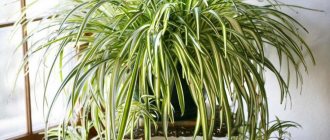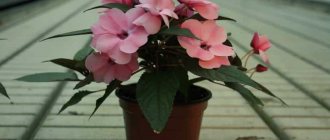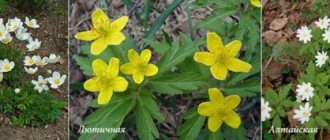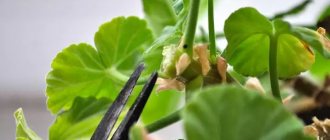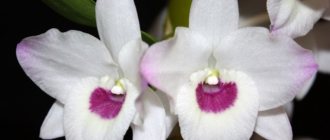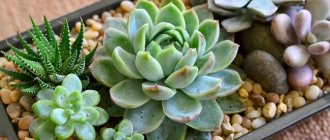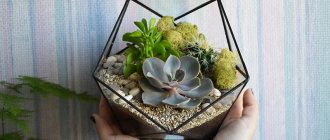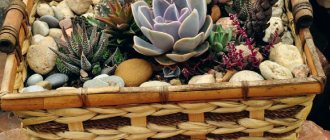Experts recommend that beginning flower growers purchase unpretentious flowers that will take root in any conditions. Therefore, it is worth paying attention to indoor plants with fleshy leaves from the Crassulaceae family. Their leaves can have a variety of shapes and colors.
The Crassulaceae family includes 30 genera of vegetation, most of which grow in warm countries with a dry climate. They accumulate moisture in stems and leaves. Their leaves are collected in a rosette, which limits the evaporation of liquid and protects the flower from sunburn. And to save moisture, the stomata on the leaves open only at night.
Succulents and their classification
Succulents (from the Latin succulentus, “succulent”) are plants that have special tissues for storing water. As a rule, they grow in places with arid climates.
Succulent means “juice” in Latin.
Almost all representatives of this plant species came to us from hot countries. Prolonged lack of moisture causes plants to store water in their fleshy stems or leaves. This is where their general classification came from - stem and leaf succulents. We're willing to bet that you've seen some types of succulents on your grandmothers' windowsills, but didn't know their name. Well-known representatives of stem succulents include:
Adenium Dorstenia
Spurge
Pachypodium
Many people wonder, are cacti and succulents the same thing? These are different plants, but most cacti are stem succulents with reduced leaves.
Gymnocalycium Michanovich
Gymnocalycium anisitsi Mammillaria Trichocereus
Note that stem succulents are diverse and unusual in their flowering. The flowers of these representatives are always bright and exotic.
Leaf varieties of succulents have taken root most of all in the apartments of amateur gardeners. They are distinguished by dense thickened leaves. Often the leaves are collected in a rosette. For such plants, this is an additional opportunity to retain moisture.
Plants for beginner gardeners
Thanks to its properties that provide water reserves, plants can survive in conditions of insufficient moisture, as well as under prolonged exposure to ultraviolet rays. Therefore, this plant is so popular among gardeners. Succulents do not require careful and careful care, as well as extensive experience in breeding. Even a novice gardener can cope with growing this plant.
Succulents are a fairly common and popular plant in the world. There are about 800 varieties of this plant. However, the most popular among gardeners are noted, such as:
- Cacti: a favorite plant of gardeners in many countries around the world. A distinctive feature of this plant is that it is easy to care for. Also, medicinal properties are present in cacti. It has long been known that cacti can absorb toxins and radiation without harming their vital functions. This factor is one of the main reasons for the popularity of the plant; Read more about popular types of cacti
- Aloe: everyone knows the Aloe plant, thanks to its components, on the basis of which many products are created in the cosmetic industry; Read more about popular homemade Aloe species
- Kalanchoe: This plant is often used for medicinal purposes and many species are famous for their colorful blooms. Read more about popular domestic species of Kalanchoe
Photos and names of succulents
Here are the most common and well-known types of indoor succulents. To enlarge the image, you need to click on the image once.
Agave
Aichrizon Aloe Vera Aloe variegated Gasteria
Graptopetalum Dikkia
Zamioculcas
Kalanchoe Cotyledon
Crassula Rupa Lithops
Rejuvenated
Oscularia Sedum
Pachyphytum
Peperomia Portulacaria
Sansevieria Synadenium Stapelia
Freethia
Haworthia Schlumbergera Echeverea Aeonium
Yucca
Succulents: care
Growing plants from the succulent family is not particularly troublesome. But there are plants that either take root or do not take root in the house. So, for some, azalea blooms without special care, while for most gardeners it is a very whimsical plant. The orchid, which is essentially a weed, bursts into color with complete beginners, but with “experienced” florists it constantly dies. A similar story happens with “succulent” representatives of indoor plants. However, there are basic rules for caring for them:
- All succulent flowers need good lighting, so the best place for them is a windowsill. From the end of spring it is advisable to place them on the balcony.
- The temperature from spring to autumn should be moderate. In winter, it is better to store succulent plants in a cool place - ideally at 13 -15 ° C.
- The air in the room should be moist and fresh. In summer, ventilation is necessary. There is no need to spray the leaves!
- Watering is moderate. In warm weather once a week, in cold weather - once a month.
- Water for irrigation should be taken at room temperature, as for most other indoor plants.
- Indoor succulents do not like peat. They need to be planted in a mixture consisting of leaf, turf soil and coarse sand in equal proportions. Good soil drainage is one of the prerequisites that must always be observed. The soil should remain moderately moist. Fertilizing for cacti and succulents is carried out in the spring once a month. There is no need to feed them in winter.
Home succulents do not need annual replanting. If the succulent is full of energy, grows, blooms and does not get sick, then you should not disturb it with transplants. If the plant has stopped growing, the skin has lost its elasticity or its usual color, then it is necessary to urgently take measures to transplant it into another soil. Replant it in dry soil mixture and water it after a few days.
Popular families
Succulent plants, regardless of species, are divided into many families. However, in horticulture, the main families are recognized, such as:
- Cactus family (Astrophytum, Opuntia, Mammillaria);
- Family of swallowtails (Caralluma, Stapelia, Guernia);
- Asphodel family (Aloe, Gasteria, Haworthia);
- Crassula family (Kalanchoe, Sedum, Crassula);
- Euphorbiaceae family (Poinsettia, Codiaum, Pedilanthus);
- Family Aizoonaceae (Lithops, Conophytum, Fenestraria).
Also read: Zamioculcas or Dollar Tree - home care, photos, signs
Useful video
There are a large number of indoor species. Plants differ in shape, color and structure; they are united only by climatic conditions and endurance. They are widely used for medical purposes and are also involved in the production of cosmetic products. Also, do not forget about the ability of this plant to decorate any interior. An indoor succulent flower can live in a house with temperature fluctuations, which does not have a negative impact on its development.
Planting and propagating succulents
Cacti and succulents have two methods of reproduction: seed and vegetative . The seed method is the most difficult. It is necessary to maintain the optimal temperature for seed germination, approximately 25 °C. If you use succulent seeds for propagation, you should choose well-ripened, fresh and proven material. Therefore, most plant growers resort to the proven method of propagation by stem cuttings and leaves.
After separation from the mother plant, the planting material of almost all succulent plants must be air-dried (3-14 days depending on the size of the cutting) so that the damaged tissues dry out. Otherwise, the cutting will simply rot. The temperature at night and during the day should differ by 10-15 degrees. Therefore, the best time for reproduction is considered to be late spring or early autumn.
The planting container should be almost flat. As a substrate, use ordinary forest soil mixed with 1/4 river sand and 1/5 charcoal. The cuttings are laid out on the surface of a damp, loose substrate, without sticking or burying their base. The dishes with leaves are placed in diffused light. Leaves usually take root within 2-3 weeks. After this, within 1-2 months they lay small rosettes, which begin to slowly develop. The primary roots of a rosette-leaf pair belong to the leaf. After the rosette forms its own roots, the mother leaf dies after some time.
Varieties of succulents according to the process of moisture accumulation
It is worth noting that all succulents are divided into two main groups, which differ in the process of moisture accumulation.
- Leaf succulents: moisture in this species accumulates in thick leaves, which have a unique waxy shell in their structure, which allows them to accumulate liquid and retain it for a significant period of time.
- Stem succulents: they differ from the leaf type in that liquid accumulation occurs in the stem. Thanks to the root system, which retains moisture on the soil surface, it becomes possible to retain liquid in the plant stem.
Succulent plants, which belong to the stem variety, have the ability to accumulate and retain moisture in the thickened part of the stem. The leaves are usually small in size and distinguished by the presence of spines. If we talk about succulents that belong to the leaf variety, then moisture accumulates thanks to the foliage, which has a fleshy and thick structure.
Leaf Succulent – Sedum / Stem – Stapelia
It is noted that succulents, regardless of the variety, easily adapt to the following conditions:
- Arid climate;
- Low amount of moisture and precipitation;
- Unbalanced fluid distribution;
- In case of high background radiation levels;
- The influence of ultraviolet radiation;
- Adapts perfectly to dry air;
- The influence of temperature fluctuations;
- The influence of clay or rocky soil.
Decorative use of succulents
Due to their ease of care and original appearance, succulents are actively used in the arrangement of alpine slides and rockeries on the site. In skillful hands, sometimes boring in appearance, “succulent” plants turn into amazingly beautiful compositions in gardens, greenhouses and on window sills. These include three-dimensional paintings of succulents, florariums, and compositions of cacti and succulents in flat vases.
You can make a panel of succulents yourself by watching the detailed master class below. After planting, the panels must be left in a horizontal position for a couple of weeks so that the planted plants take root. After which the picture can be hung on the wall. Before watering, you need to remove the painting and water the succulents with a syringe.


